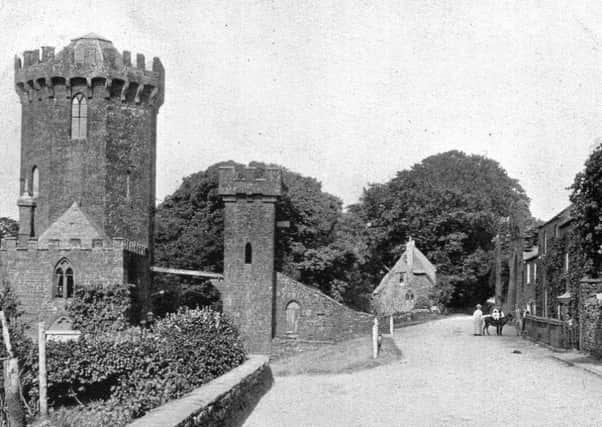LOOK BACK WITH LITTLE: Do you recall when we stepped back to 1642?


In the autumn of 1642 Royalists and Parliamentarians confronted each other at Edgehill.
The White King contains a substantial description of the occasion and ends this with an interesting sentence, ‘both sides had believed this one battle would end the war, but now it was obvious there was no clear victor’. An important consequence was that Banbury had to endure two fierce sieges of its castle.
Advertisement
Hide AdAdvertisement
Hide AdIn spite of this concluding remark, late August of 1985 will be remembered for a re-enactment of the Battle of Edgehill. Preparations for this took place in the Kineton area in late summer. Organisers of this historic occasion were those responsible for the Army Benevolent Fund and Kineton village hall committee.
The scale of the event justified prominent publicity in the form of a colourful tabloid newspaper put together by journalists of the Birmingham Post, Evening Mail and Sunday Mercury. They hailed the occasion as ‘Britain’s biggest Bank Holiday spectacular’. No wonder, it was in the capable hands of the Sealed Knot who had been founded in 1968 by Brigadier Peter Young, author of a book in which he relives the action which characterised the 17th century Civil War battle. A major aim of the Sealed Knot has always been to reawaken interest in the conflict between Charles I and his parliament.
The programme for the three-day event included a most informative article by Richard Marsh who was poised to publish a tourist guide to the Edgehill area in which he describes how the battle was fought. In common with other historians of the period he comes to the conclusion that the outcome was a draw. So far as Banbury was concerned its significance was far less than that of the sieges, which not only severely damaged the castle but inflicted damage on many private properties. Information about the latter can be found in Banbury Historical Society’s Records Volume entitled Tudor and Stuart Corporation Records.
Anyone connected with Kineton might well have queried why refight such an indecisive battle? One answer came from journalist Peter Rhodes who promised ‘a sight to remember all your life – a vast colourful, noisy dramatic portrayal’.
Advertisement
Hide AdAdvertisement
Hide AdAn interesting editorial accompanied the official programme. It was the newsroom’s impression that the spectacular event would reflect ‘all that was best in English village life and community enterprise’. In common with many other rural locations there was a need to replace Kineton’s existing village hall which was a 70- year-old timber structure. Estimated cost was in the region of £100,000 so the hope was that some 30,000 people would be attracted and raise in the region of £25,000 which could be shared between the Kineton Village Hall Association and the Army Benevolent Fund.
Early problems confronting the organisers related to access, security and visibility. These made it impossible to use the original Edgehill battlefield. However an ideal alternative was found at Park Farm, Combrook. The 136 acre site had an appropriate amphitheatre shape.
Apart from the battle itself which was staged from 3 pm to 4.30 pm on each of the days, times were allocated to many other event participants. Foremost among these were the bands such as the Royal Fusiliers and Hinckley Fiesta. Acrobatic displays promised much as did parachute jumps by the Blue Helmets of the 5th Airborne Brigade Royal Signals.
The re-enactment demonstrated the difference between combat conditions in 1642 and 1985. Members of the Sealed Knot brandished muskets which were difficult to handle but took the public back to the 17th century.
By contrast soldiers from the Territorial Army had sub-machine guns which offered much better targeting. Their strategy was that of the late 20th century.